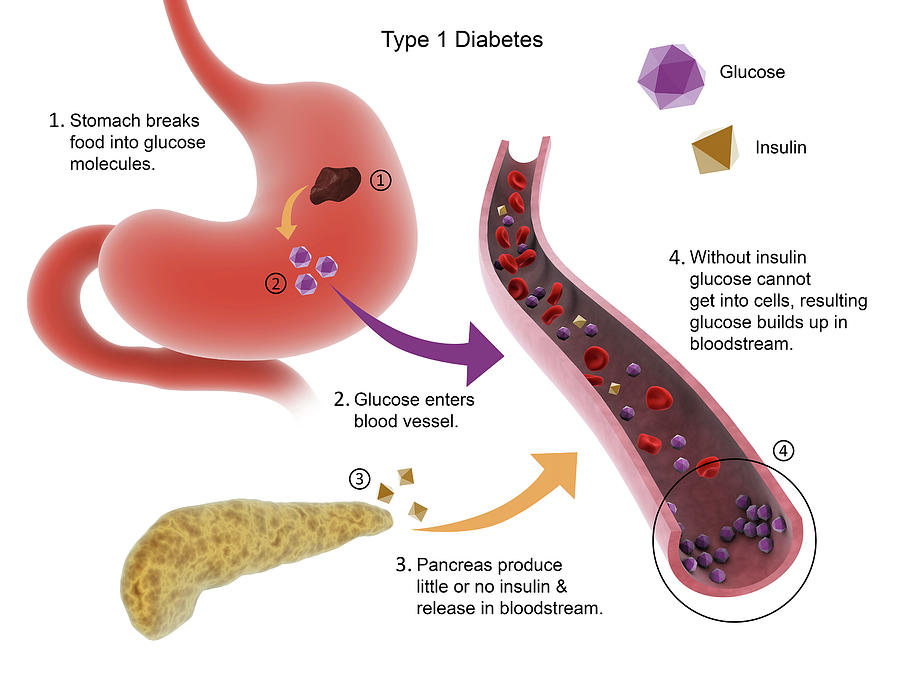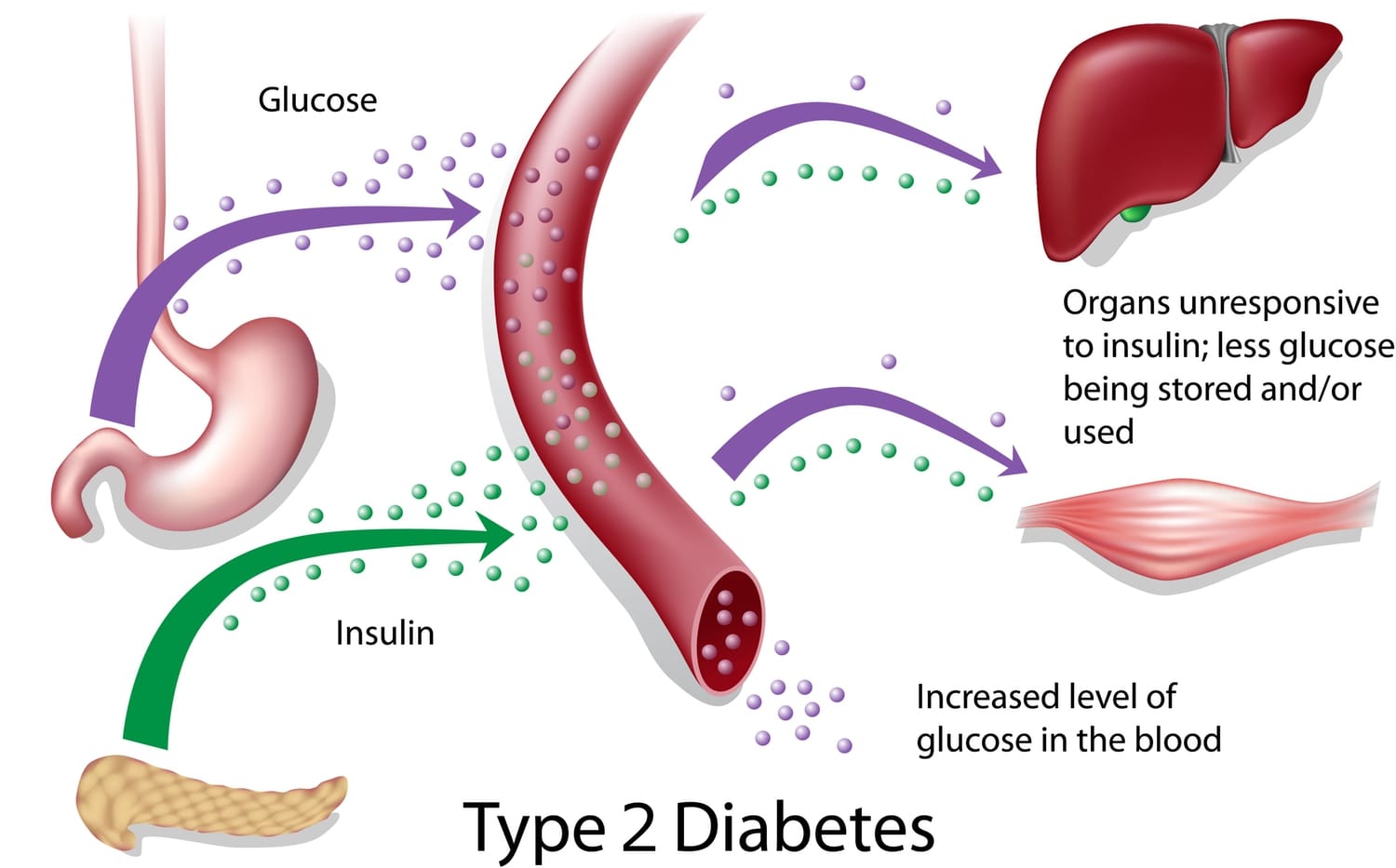- Home
- Prelims
- Mains
- Current Affairs
- Study Materials
- Test Series
Diabetes: The ticking time bomb for India
- As of June 2023, 11.4% of India''s population, translating to over 100 million individuals aged 20 and above, are grappling with diabetes.
- Additionally, another 136 million (15.3%) are on the brink, of being pre-diabetic.
- The obesity concern is equally alarming with 28.6% of Indians falling under the obese category based on Body Mass Index (BMI) metrics.
Diabetes
- Diabetes is a medical condition caused due to insufficient production and secretion of insulin from the pancreas in case of Type-I diabetes and defective response of insulin for Type-2 diabetes.
- Under normal body circumstances, blood glucose levels are tightly controlled by insulin, a hormone produced by the pancreas, that lowers the blood glucose level.
- When the blood glucose elevates, insulin is released from pancreas to normalize the glucose level.
- In patients with diabetes, the absence or insufficient production of insulin causes hyperglycemia.
|
Feature |
Type 1 Diabetes |
Type 2 Diabetes |
|
Definition |
An autoimmune disorder where the immune system destroys insulin-producing beta cells in the pancreas. |
Metabolic disorder characterized by insulin resistance or inadequate insulin production. |
|
Age of Onset |
Typically diagnosed in children |
Often diagnosed in adults, but |
|
|
and young adults. |
can occur at any age. |
|
Causes |
Unknown, possibly genetic and environmental factors. |
Strongly linked to genetics, obesity, and lifestyle factors. |
|
Symptoms |
Frequent urination, excessive thirst, weight loss, fatigue, and blurred vision. |
Often asymptomatic or have mild symptoms initially. |
|
Risk Factors |
Family history of Type 1 diabetes, genetics. |
Family history of Type 2 diabetes, obesity, inactivity, poor diet. |
|
Prevention |
No known prevention. |
Can often be prevented or delayed through lifestyle changes. |


Factors that contribute to the prevalence of diabetes in India
Dietary causes:
- The surge in diabetes cases is largely attributed to the rampant consumption of ultra-processed foods and beverages.
- These include carbonated drinks, instant cereals, and a plethora of fast foods ranging from pizzas to sweetened yogurts.
- Research underscores the peril of diets laden with ultra-processed foods or those high in sugar, fat, and salt.
- 10% daily uptick in such food consumption can spike the risk of type-2 diabetes in adults by 15%.
Lifestyle Changes:
- Rapid urbanization increased ''westernization'', and the shift towards sedentary lifestyles have contributed to the rise in diabetes cases in India.
- The availability of machines and decreased physical activity, coupled with stress, play a significant role.
Physical Inactivity:
- A study by ICMR highlighted the sedentary nature of Indian adults, with men being physically active for close to two hours a day, while women spent just about 52 minutes.
Financial Strain:
- The overall diabetes and prediabetes care market in India is projected to soar to about $60 billion by 2030, up from $17 billion in 2020-21.
- On average, a type-2 diabetes patient in India incurs an annual expense of ₹11,000, with medications accounting for 55% of this cost.
Global Trends and Role of Food Industry in India
- While high-income nations witness a dip in sugar-sweetened beverage sales, companies are redirecting their focus to countries like India.
- The younger generation and the burgeoning middle class are prime targets.
- From cartoon characters to celebrity endorsements, the tactics are manifold, leading to skewed consumption choices.
Policy and Regulatory measures are required to curb diabetes
- Regulation Need: Amidst the health crisis, there''s a pressing need to clamp down on the marketing of unhealthy edibles by ordinance (under Article 123 of the Constitution) or supervised regulatory provisions.
- Industry Resistance: The food industry, while resisting such regulations, offers partnership baits, often underplaying the health crisis and overstating economic benefits.
- Regulatory Lapses: The Food Safety and Standards Authority of India''s response has been tepid, with the food industry wielding significant influence.
- Legal Safeguards: To shield the populace from the food industry''s manipulative tactics, a robust legal framework is imperative.
- This could encompass defining ''healthy food'', mandating warning labels, and curbing promotional tactics for unhealthy products.
Similar actions have recently been taken by the governments of South Africa, Norway, and Mexico. The Indian government can demonstrate its strength by regulating food labelling and marketing. A law of this nature will be a clear demonstration of the government''s will. The Infant Milk Substitutes, Feeding Bottles, and Infant Foods Act stifled commercial baby food growth. The proposed new law could have a similar effect on unhealthy foods and beverages. This is a thought whose time has come.









 Latest News
Latest News
 General Studies
General Studies